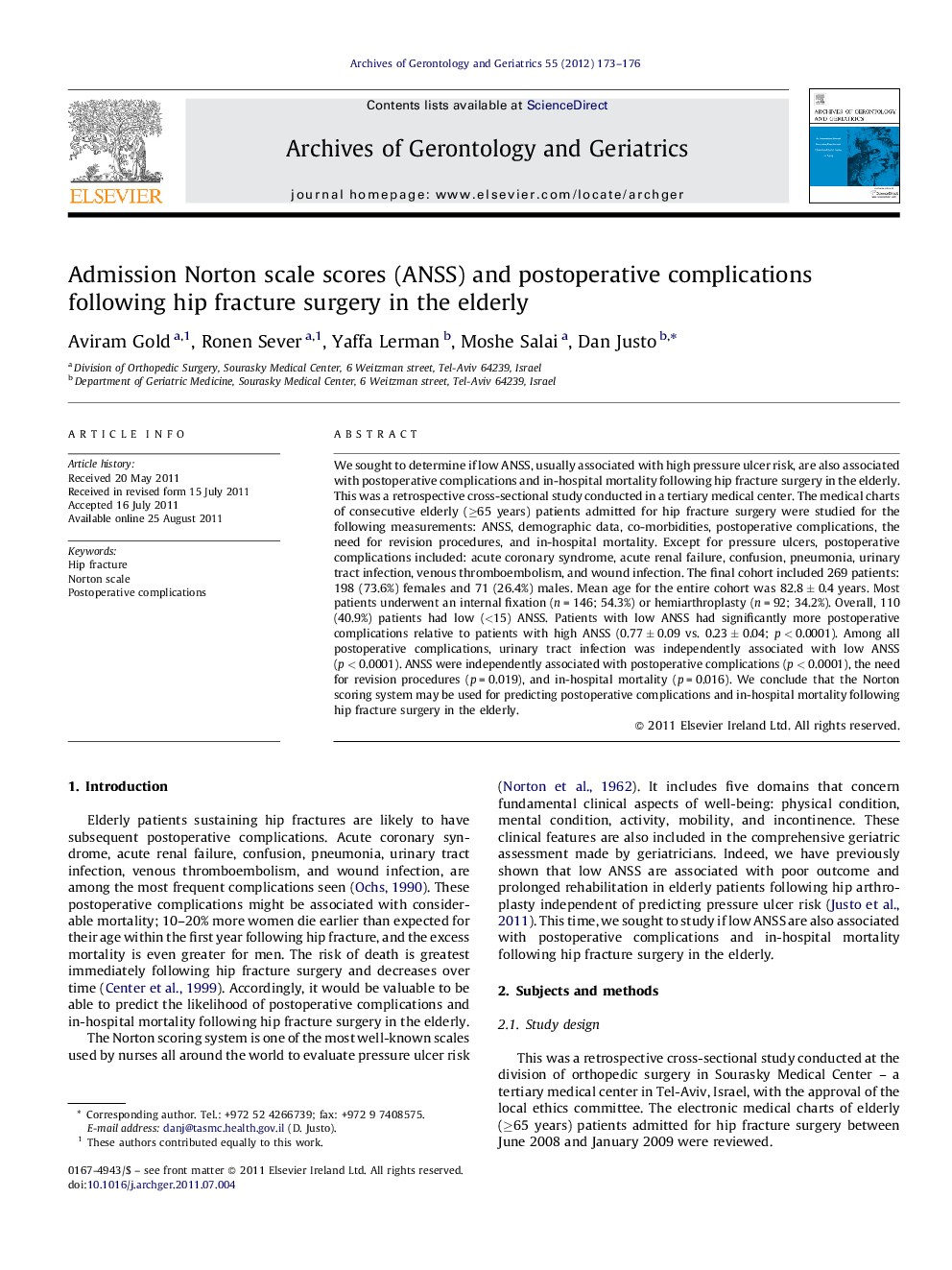| Article ID | Journal | Published Year | Pages | File Type |
|---|---|---|---|---|
| 1902880 | Archives of Gerontology and Geriatrics | 2012 | 4 Pages |
We sought to determine if low ANSS, usually associated with high pressure ulcer risk, are also associated with postoperative complications and in-hospital mortality following hip fracture surgery in the elderly. This was a retrospective cross-sectional study conducted in a tertiary medical center. The medical charts of consecutive elderly (≥65 years) patients admitted for hip fracture surgery were studied for the following measurements: ANSS, demographic data, co-morbidities, postoperative complications, the need for revision procedures, and in-hospital mortality. Except for pressure ulcers, postoperative complications included: acute coronary syndrome, acute renal failure, confusion, pneumonia, urinary tract infection, venous thromboembolism, and wound infection. The final cohort included 269 patients: 198 (73.6%) females and 71 (26.4%) males. Mean age for the entire cohort was 82.8 ± 0.4 years. Most patients underwent an internal fixation (n = 146; 54.3%) or hemiarthroplasty (n = 92; 34.2%). Overall, 110 (40.9%) patients had low (<15) ANSS. Patients with low ANSS had significantly more postoperative complications relative to patients with high ANSS (0.77 ± 0.09 vs. 0.23 ± 0.04; p < 0.0001). Among all postoperative complications, urinary tract infection was independently associated with low ANSS (p < 0.0001). ANSS were independently associated with postoperative complications (p < 0.0001), the need for revision procedures (p = 0.019), and in-hospital mortality (p = 0.016). We conclude that the Norton scoring system may be used for predicting postoperative complications and in-hospital mortality following hip fracture surgery in the elderly.
